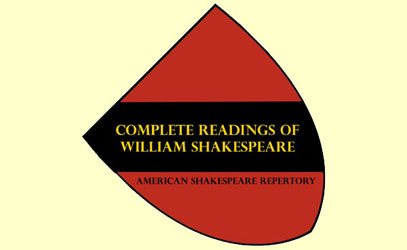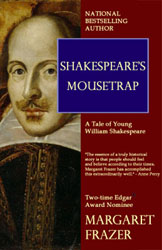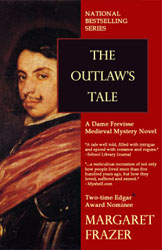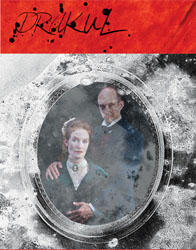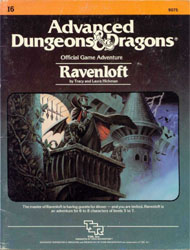 I’ve recently been reading my way through I6 Ravenloft and Expedition to Castle Ravenloft. Although I haven’t finished the latter, I am so far impressed with the way in which it remains faithful to the original module while expanding the material in interesting ways. (It even includes functional notes for stripping out the extra material in order to return the module to something very close to its original form if a shorter adventure is desired.) I am less impressed with the textual bloat which has become endemic in most modern adventure modules. Much of this text seems to be included in the name of being useful (reminding the DM of basic rules like how trip attacks are adjudicated), but it has the practical effect of making it more difficult to rapidly gloss the truly necessary information at the game table.
I’ve recently been reading my way through I6 Ravenloft and Expedition to Castle Ravenloft. Although I haven’t finished the latter, I am so far impressed with the way in which it remains faithful to the original module while expanding the material in interesting ways. (It even includes functional notes for stripping out the extra material in order to return the module to something very close to its original form if a shorter adventure is desired.) I am less impressed with the textual bloat which has become endemic in most modern adventure modules. Much of this text seems to be included in the name of being useful (reminding the DM of basic rules like how trip attacks are adjudicated), but it has the practical effect of making it more difficult to rapidly gloss the truly necessary information at the game table.
But I digress.
What really inspired this little post is the Weird Happenings table on page 15 of Expedition to Castle Ravenloft. It’s a nice little table, the first entry of which reads:
The sound of a voice screaming comes from somewhere in the castle; it sounds exactly like one of the PCs.
As I normally do when reading module text, I immediately visualized how I would handle that at the gaming table. It would go something like this:
1. Randomly determine the PC. (Let’s say a ranger named Afrau.)
2. Hand that player a note reading, “Write two sentences on this note and then hand it back to me.”
3. Take the note back.
4. Say, “You suddenly hear the sound of screaming coming from somewhere in the castle. It sounds exactly like Afrau.” (point at Afrau’s player)
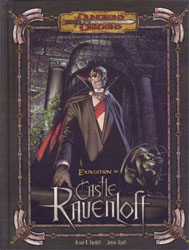 In doing this, I would be practicing something that could be called “metagame special effects”. The idea is that I’m using purely metagame activities in order to influence the players’ perceptions of the game world.
In doing this, I would be practicing something that could be called “metagame special effects”. The idea is that I’m using purely metagame activities in order to influence the players’ perceptions of the game world.
In the case of this Weird Happening, I specifically want to create for the players the uncertainty, fear, or paranoia which would be experienced by their characters if they suddenly heard their companion (standing right next to them) screaming from some distant corner of a haunted, vampire-ridden castle.
1. I’m secretly rolling dice without any apparent reason for doing it. This creates uncertainty and curiosity in the players. Why am I doing that? What am I hiding from them? Is something about to happen? What?
2. By exchanging notes with a player, I’m specifically creating the awareness that there is secret knowledge being exchanged. That knowledge could be anything. In this particular case, it’s a bluff. What I’m creating is the legitimate possibility that the character may have been secretly teleported away and replaced with a double or an illusion.
Something happened. Only one of them seems to know what it was. And that character is now both (a) standing calmly beside them and (b) screaming from another part of the castle.
Without creating a legitimate atmosphere of doubt and uncertainty at the game table (however subtle it may be), the scream can be easily dismissed as “flavor text”. Some players may find it “spooky” or “creepy”. But they probably won’t take its deeper threat seriously.
EXTRANEOUS SPOT CHECKS
Another example of metagame special effects is my use of “extraneous Spot checks”. In my games, I will periodically call for Spot checks regardless of whether or not there’s anything interesting to be spotted. Newcomers to my games tend to get paranoid when their high rolls fails: “There must be something. What did we miss?”
Eventually, of course, all of my players eventually figure out that I’m frequently “crying wolf” with these checks. I don’t care. The more experienced heroes may no longer be quite so skittish or paranoid as they jump at imaginary shadows, but the tool is still useful: First, it obscures the metagame knowledge of “he’s called for a Spot check, must be something interesting”. Second, it can be a useful way to passively refocus attention on the game world when extraneous distractions and chitchat have derailed the players.
(I don’t simply make the Spot checks secretly because: (a) I’d rather avoid the hassle of needing to track the PCs Spot modifiers. (b) I’d rather have the players actively involved in that moment rather than passively waiting for me to roll dice. (c) It eliminates any arguments about, “Whaddya mean we got ambushed? Don’t I get a Spot check? Did you remember that I get a +3 versus spotting cyborgs?” (d) I really like the utility of being able to gently refocus attention through applying a game mechanic instead of saying, “Please focus.”)
FOCUS ON THE “HOW”
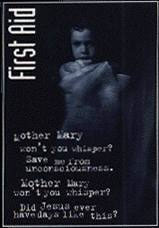 In short, it’s not just enough to know the “what” you’re trying to communicate; you also need to give some thought to how you’re communicating it.
In short, it’s not just enough to know the “what” you’re trying to communicate; you also need to give some thought to how you’re communicating it.
For example, here’s another Weird Happening from that Ravenloft table:
A random PC hears the soft giggling of a little girl; no one else can hear it.
How would you handle that at as a GM?





